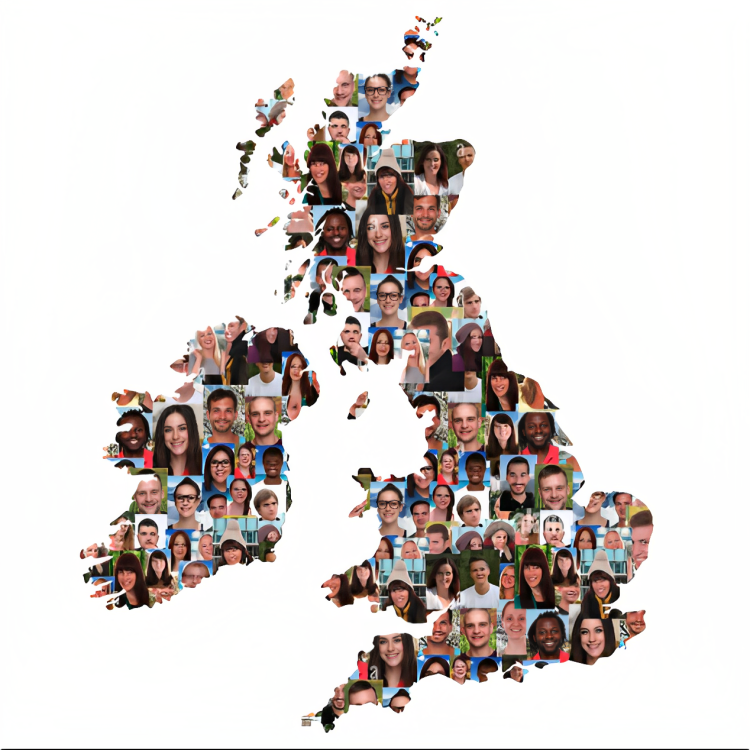Table of Contents
How GeekyAnts Provides Localised Experience to UK Audiences
Author

Date

Book a call
The world of digital enterprises is fast-paced and enchanting. Success in this domain lies in creating exceptional products and tailoring them to captivate specific audiences.
That's why, when creating an application for the United Kingdom, a realm with its own cultural quirks and consumer preferences, delivering a one-size-fits-all experience just won't cut it. We say this from our years of experience.

So in this article, we explain the significance of giving user experience a local flavor and our secret to delivering apps that UK audiences trust.
The Enigma of Localised User Experience
User experience (UX) is always an enigma! It is a mystical force that can transform digital dreams into breathtaking realities. But for the UK market, great UI needs to be molded for custom experiences — similar to how a chameleon adapts to the essence of each unique audience.
When it comes to localised user experience, attention to detail is key. It's not just about translating text into the local language, but also about understanding the cultural nuances and preferences of the target audience. For example, colors considered lucky in one culture may be seen as unlucky in another. Red is an auspicious color in the Chinese community while for some cultures it is a sign of danger.
At GeekyAnts, we make it a point to dive deep into various audience habits through research, interviews, and testing small use cases. We look at it as unraveling the very soul of culture to create an experience that feels relatable.
Note: Paypoint, a British payment service platform, understood the need for localised user experience and restructured the UI/UX of its payments application to extend its services sector. Check out how
What does Localisation do?
Localisation is more than just a translation process; it involves adapting a digital product's content, design, and functionality to suit the target audience's cultural, linguistic, and regulatory requirements. This approach allows companies to create a seamless experience that feels native to the users.
- Localisation enables easy navigation, understanding, and engagement with digital products.
- It eliminates potential barriers caused by language, cultural differences, or legal considerations.
- It fosters a sense of familiarity and relevance, ultimately improving user satisfaction and overall brand perception.
Why UK Audiences Need a Localised Experience

The United Kingdom has a distinct culture and consumer landscape, presenting unique business challenges and opportunities. Companies need to understand the local context to effectively engage with UK audiences and tailor their offerings accordingly.
In the UK, there are specific legal and regulatory requirements that companies must adhere to. Localisation considers these factors, ensuring that the digital product complies with local laws and regulations. This avoids potential legal issues and builds trust and credibility among UK users.
Furthermore, the UK has a diverse population with different regional variations and dialects. By localising the user experience, companies can cater to these regional differences, making the product feel more inclusive and relevant to users nationwide.
Customizing the user experience to local trends for UK audiences also involves understanding their unique preferences and cultural references.
For example, using British English spellings, including references to local landmarks or cultural events, and adapting the design to align with UK aesthetics can create a stronger emotional connection with users.
Strategies for Delivering a Localised Experience
Now that we understand the importance of localisation, let's delve into the strategies required to deliver a localised experience for UK audiences.
Researching and Understanding the UK Market
To create a truly personalized experience, extensive market research is undertaken to gather insights about the preferences, trends, and cultural nuances specific to the UK audience. This involves analyzing user behavior, conducting surveys, and studying industry reports to gain valuable knowledge about design and development decisions. The goal is to ensure that every digital solution created aligns perfectly with the expectations and requirements of UK users.
Incorporating Local Trends and Preferences
Adapting to local trends is a key element in delivering a successful localised experience. Our company carefully incorporates UK-specific design elements, color schemes, and visual aesthetics to create an interface that resonates with the local audience. Additionally, we pay close attention to local preferences when it comes to features, functionality, and content presentation. By tailoring the user interface and interaction design to match the familiar patterns and conventions, we create a delightful experience that feels intuitive and user-friendly to UK audiences.
Case Studies of Successful Localisation Experiences
Client: Paypoint - Industry: Logistics

Requirement:
- Design the UX of the application.
- Build UI for Login/Registration, Driver Delivery, and Customer Collection screens.
- Integrate UI elements with APIs.
- Add Firebase Analytics for app usage and user engagement insights.
- Deploy the app in iOS and Android environments.
- Develop UI and integration process for Inventory Scanning and Parcel Refusal.
Development:
- Extra attention given to code readability and automated configurations for smooth deployment.
- The QA team provided constructive feedback and conducted thorough testing to improve overall app quality.
- Scalable UI design and crash reporting system implemented for faster development and bug resolution.
USP:
- Strategy based on the time and material model with sprints for each milestone.
- Restructured the UI/UX of the payments application to extend its services sector.
Client: SoccerManager - Industry: Gaming

Requirement:
- Revamp the user experience of the existing web application with better visuals.
- Develop a tablet-responsive mobile version of the application.
- Implement a chatbot option for both mobile and web versions.
- Develop a proof of concept for project navigation.
Development:
- Started with website design phase followed by mobile and tablet responsiveness improvements.
- Built the website using Flutter Web for cross-platform compatibility.
- Implemented design systems for dark and light themes and optimized color palettes and icons.
USP:
- Thorough brainstorming to understand feature functionalities.
- Design systems for both dark and light themes to enhance user experience.
Client: Liviit - Industry: Social Media Entertainment

Requirement:
- Create a web app with features of leading social media websites for private use.
- Include streamlined communication channels, private hubs, community networks, chats, and more.
- Design an attractive and user-friendly UI for all ages.
- Efficiently manage and share calendars, lists, files, vaults, and music.
Development:
- Frontend developed using React, Redux, SASS, Bootstrap, and Styled-Components.
- Utilized SASS and Bootstrap for a maintainable and visually appealing web app.
- Custom dashboards and efficient storage and retrieval of information implemented.
USP:
- Assigned an experienced web developer for the project, leading to effective planning and development.
Unveiling the Future of Localisation in Web and Mobile Development
As the sun of technology rises higher in the digital horizon, the art of localisation awakens from its slumber, ready to embark on an enchanting journey into the realm of possibilities.
Emerging Trends in Localisation
One emerging trend is the use of machine learning and artificial intelligence to automate the localisation process. By leveraging these technologies, companies can streamline translation, adapt content dynamically, and personalize user experiences based on individual preferences.
Another trend is the emphasis on cultural sensitivity. In an increasingly interconnected world, acknowledging and respecting cultural differences is key to delivering a successful localised experience.
How GeekyAnts Plans to Continue Delivering Localised Experiences
GeekyAnts plans to embrace these emerging trends to continue delivering exceptional localised experiences for UK audiences 🇬🇧. By integrating AI and leveraging data-driven insights, we aim to enhance their localization capabilities.
We aim to deepen our understanding of cultural nuances and incorporate them into our design and development processes. By fostering a culture of cultural sensitivity, we strive to create inclusive experiences that resonate with audiences across diverse markets.
Dive deep into our research and insights. In our articles and blogs, we explore topics on design, how it relates to development, and impact of various trends to businesses.






